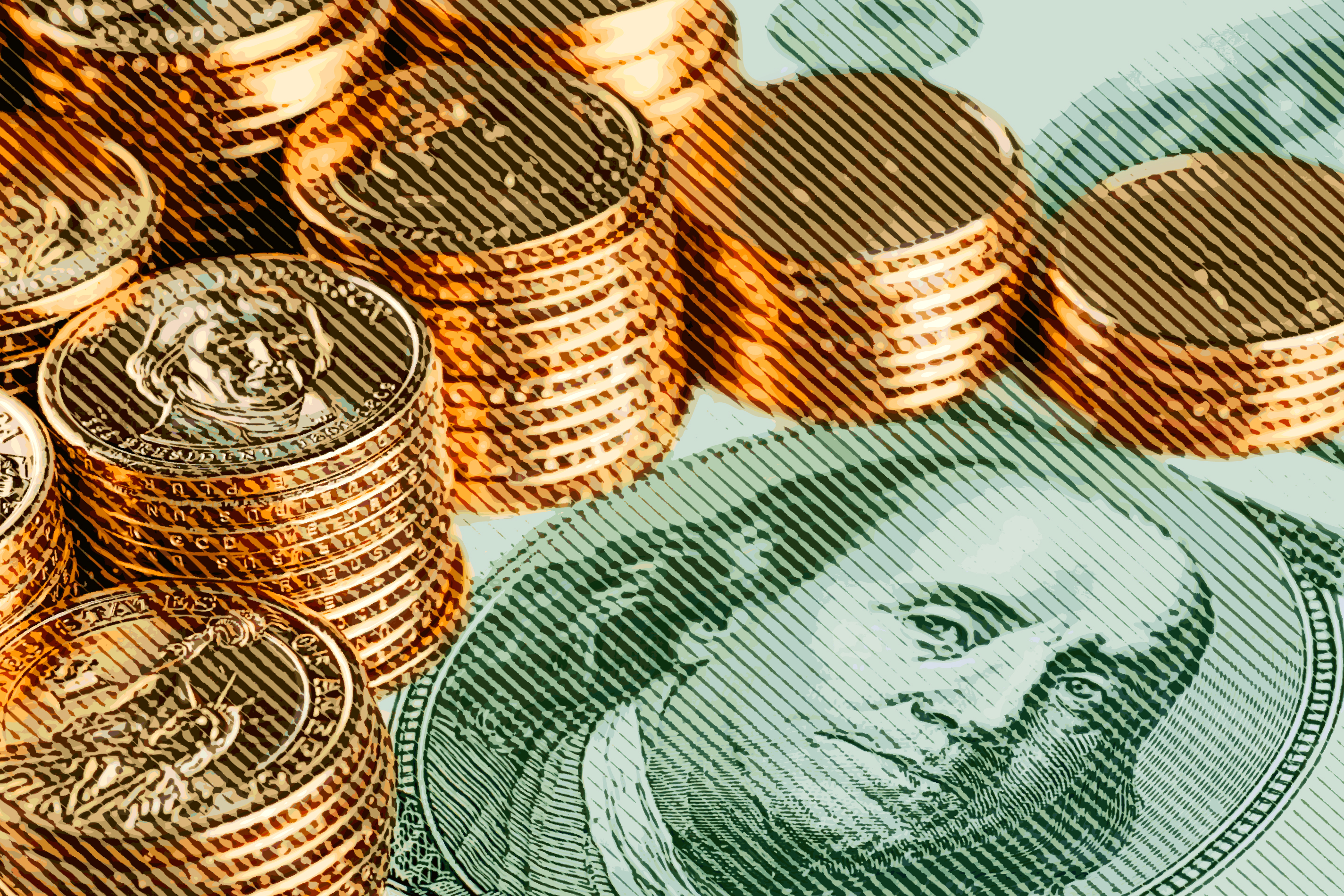What Are the Hedge Fund Masters of the Universe Buying?
Here are five stocks that I think are worth a look. See if you agree with me.

Investing is one of those rare disciplines in which it really doesn’t pay to be original. This is money, not literature. They don’t award Pulitzer Prizes for original investing ideas.
You don’t want to mindlessly follow the herd, of course. That rarely ends well. Before you copy the trading moves of another investor, you need to do a little homework of your own, and you should always maintain an independent, skeptical mind when putting your capital at risk. But you don’t get bonus points for coming up with an original trade. Returns are returns, regardless of whose idea the trade was, so there is really no sense in reinventing the wheel.
Today, we’re going to take a look at some of the most recent major trades by some of the smartest investors in the business. Not all of these are trades I would recommend myself. In fact, at least one of them is a stock I would run away from--screaming. But it’s worthwhile to track which stocks the masters of the universe are buying. Even if we don’t invest along with them on every trade, we might learn a thing or two.
From just $107.88 $24.99 for Kiplinger Personal Finance
Become a smarter, better informed investor. Subscribe from just $107.88 $24.99, plus get up to 4 Special Issues

Sign up for Kiplinger’s Free Newsletters
Profit and prosper with the best of expert advice on investing, taxes, retirement, personal finance and more - straight to your e-mail.
Profit and prosper with the best of expert advice - straight to your e-mail.
Cheniere Energy
Let’s start with liquefied natural gas exporter Cheniere Energy (LNG). With the price of crude oil under major pressure in 2015, energy stocks – Cheniere included – have taken an absolute beating. Cheniere is down over 40% from its 52-week high. Yet some of the smartest investors of our lifetimes are backing up the proverbial truck and loading it up with Cheniere.
Last quarter, Seth Klarman – a value investor that most other value investors consider to be an a god-like figure – increased his already massive position in Cheniere by nearly half. (See Investing Legends: Baupost’s Seth Klarman)
Klarman runs a highly-concentrated portfolio; so highly concentrated, in fact, that his top five stocks make up more than half the portfolio. Cheniere now makes up fully 18% of Klarman’s portfolio, and Klarman owns 22 million shares at an average cost basis of $63.57 per share.So at today’s price of about $48 per share, you could get a better deal than Klarman, a man universally recognized as one of the savviest value investors to ever play the game.
And Klarman isn’t the only legend aggressively buying Cheniere. Carl Icahn has been aggressively accumulating the shares and bought 27 million shares last quarter at an average price of $61.88 per share. And since the end of the quarter, he’s continued to average down, buying an additional 1.3 million in the mid-$40s. So today, you can buy Cheniere at a better price than Mr. Icahn as well.
What do these legends see in Cheniere, amidst the carnage in the energy market? They’re looking ahead. If you are a European or Asian energy importer, would you feel comfortable trusting your country’s gas supply to Vladimir Putin’s Russia or to the volatile Middle East? Me neither.
If you believe that American gas exports make sense, then Cheniere makes sense.
Mondelez International
Up next is snack food giant Mondelez International (MDLZ), the owner of the Nabisco, Cadbury and Oreo brands, among others.
As I wrote recently (see “Coke in the Crosshairs”) junk food today is somewhat reminiscent of cigarettes 30 years ago. Regulators and activists are blaming junk food companies for everything from childhood obesity to adult-onset diabetes.
But just as Big Tobacco stocks have often been some of the best stocks to buy despite the onslaught of bad publicity against them, junk food stocks might also represent a good opportunity. Perhaps that is Pershing Square boss Bill Ackman’s rationale for making a major investment in Mondelez last quarter. Ackman bought 43 million shares, making Mondelez his fourth-largest holding at 13% of his long portfolio.
Like Seth Klarman, Bill Ackman tends to run a highly concentrated portfolio in which he bets big on a very small handful of stocks. When it works, it works fantastically well. Ackman’s hedge fund earned returns in excess of 40% last year.
Alas, running a concentrated portfolio is not without its risks. Ackman’s fund is down about 20% this year, due in large part to its overweighted position in Valeant Pharmaceuticals (VRX).
So, is Ackman’s bet on Mondelez likely to pan out? Based on the prices he paid, I think chances are good. Mondelez trades for just 8 times trailing earnings.
Apple
Up next is one of my personal favorites, consumer electronics king Apple (AAPL). Carl Icahn is probably the highest-profile Apple bull out there. Icahn has about 20% of his portfolio allocated to Apple, and he’s been the loudest voice calling for Apple to return cash to shareholders via dividend hikes and aggressive share repurchases.
But Icahn now has company from fellow hedgie David Einhorn, who increased his already enormous position in Apple by more than half last quarter. Einhorn now owns 11 million shares, making Apple about 20% of his long portfolio.
Apple, as the largest company in the world by market cap, is naturally going to be widely held by large money managers. But putting 20% of your portfolio into a single stock is a bold move. And given the general sense of bearishness towards Apple these days, is it the right statement?
Here’s my view: It’s fair to say that Apple is no longer the growth dynamo it was five years ago. The smartphone market, at least in the developed world, is largely saturated. So at this point, most iPhone sales are replacements rather than new purchases. iPad sales have been disappointing for several quarters, and Apple’s newer products – such as the Apple Watch and Apple Pay – haven’t been blockbusters.
Guess what? At today’s prices, none of that actually matters. Apple is not being priced as a growth dynamo. In fact, at 12 times trailing earnings, it’s being priced as a no-growth company. Meanwhile, the S&P 500 trades for 21 times trailing earnings.
That’s absurd. In a broadly expensive market, it makes no sense that Apple trades at such a deep discount. I would follow Icahn and Einhorn here.
Alphabet
Up next, we have Apple’s rival in the smartphone wars, Alphabet (formerly Google, GOOGL).2015 has been the year of the “FANGs,” in which a small handful of stocks – specifically Facebook (FB), Amazon (AMZN)Netflix (NFLX) and Google have been responsible for keeping the market averages afloat.
Perhaps this is what convinced Leon Cooperman to massively increase his stake in Alphabet last quarter. Cooperman bought 213,659 shares of Alphabet in the second quarter and then more than doubled his holdings with a 269,090-share purchase in the third.
Cooperman, who heads Omega Advisors, does not run as concentrated a portfolio as some of the other gurus I’ve covered today. But Alphabet is now his largest holding and makes up a very respectable 6% of his portfolio.
Alphabet is not particularly cheap, trading at 31 times trailing earnings. Also, and much to my chagrin, Alphabet does not pay a dividend, which I consider almost criminal for a company of Alphabet’s size.
Still, Alphabet has been one of the few bright spots this year in a market that has been mostly disappointing, particularly for value investors. If you’re a momentum investor, then by all means, buy Alphabet and ride it higher. Just be prepared to sell when the market gets fickle and turns its affections elsewhere.
International Business Machines
And finally, we get to International Business Machines (IBM), a long-time holding by Warren Buffett. Buffett added about 1.5 million shares to his IBM position last quarter, and it is now his fourth-largest holding.
Buffett is also losing his shirt on IBM. He owns 81 million shares at an average price of $172 per share. At time of writing, IBM trades for just $134.45.
Buffett’s ownership of Big Blue is old news. But he now has company in the trade. Last quarter, Bruce Berkowitz and Eddie Lampert each made new purchases of IBM. Berkowitz bought 754,000 shares, making IBM a modest 3% of his portfolio. Lampert bought 440,225 shares, making it about 4% of his portfolio.
I don’t claim to be smarter than Buffett, Berkowitz or Lampert. But I don’t intend to follow them into this trade either. IBM’s business appears to be falling apart. Revenues have been falling for three straight years with no end in sight, and IBM has been slow to compete with more flexible cloud rivals Amazon, Alphabet and Microsoft (MSFT).
So, what do these storied value investors see in IBM? It is a cheap stock at current prices, trading for just 9 times trailing earnings. But remember, those earnings are inflated by IBM’s aggressive share repurchases, and cheap stocks can stay cheap forever in the absence of a catalyst to send them higher.
Frankly, I see no catalyst for IBM right now. After the tumble the stock has taken, a dead-cat bounce is a real possibility. But if I’m going to make a long-term bet in this space, I’d put my money on Microsoft instead.
Disclosures: Long AAPL, MSFT.
Charles Lewis Sizemore, CFA, is chief investment officer of the investment firm Sizemore Capital Management and the author of the Sizemore Insights blog.
Profit and prosper with the best of Kiplinger's advice on investing, taxes, retirement, personal finance and much more. Delivered daily. Enter your email in the box and click Sign Me Up.

Charles Lewis Sizemore, CFA is the Chief Investment Officer of Sizemore Capital Management LLC, a registered investment advisor based in Dallas, Texas. Charles is a frequent guest on CNBC, Bloomberg TV and Fox Business News, has been quoted in Barron's Magazine, The Wall Street Journal, and The Washington Post and is a frequent contributor to Yahoo Finance, Forbes Moneybuilder, GuruFocus, MarketWatch and InvestorPlace.com.
-
 Should You Renew Your CD?
Should You Renew Your CD?With rate cuts impacting earnings, we examine if now is a wise time to renew CDs.
-
 7 Ways to Plan Now to Save on Medicare IRMAA Surcharges Later
7 Ways to Plan Now to Save on Medicare IRMAA Surcharges LaterUnderstand the critical two-year lookback period and why aggressive planning before you enroll in Medicare is the most effective way to minimize IRMAA.
-
 Law Reversal Looming? Trump Eyes 2026 Gambling Winnings Tax Change
Law Reversal Looming? Trump Eyes 2026 Gambling Winnings Tax ChangeTax Deductions It's no secret that the IRS is coming after your gambling winnings in 2026. But how long will that last?
-
 Your Year-End Tax and Estate Planning Review Just Got Urgent
Your Year-End Tax and Estate Planning Review Just Got UrgentChanging tax rules and falling interest rates mean financial planning is more important than ever as 2025 ends. There's still time to make these five key moves.
-
 What Makes This Business So Successful? We Find Out From the Founder's Kids
What Makes This Business So Successful? We Find Out From the Founder's KidsThe children of Morgan Clayton share how their father's wisdom, life experience and caring nature have turned their family business into a respected powerhouse.
-
 Past Performance Is Not Indicative of Your Financial Adviser's Expertise
Past Performance Is Not Indicative of Your Financial Adviser's ExpertiseMany people find a financial adviser by searching online or asking for referrals from friends or family. This can actually end up costing you big-time.
-
 I'm a Financial Planner: If You're Not Doing Roth Conversions, You Need to Read This
I'm a Financial Planner: If You're Not Doing Roth Conversions, You Need to Read ThisRoth conversions and other Roth strategies can be complex, but don't dismiss these tax planning tools outright. They could really work for you and your heirs.
-
 Could Traditional Retirement Expectations Be Killing Us? A Retirement Psychologist Makes the Case
Could Traditional Retirement Expectations Be Killing Us? A Retirement Psychologist Makes the CaseA retirement psychologist makes the case: A fulfilling retirement begins with a blueprint for living, rather than simply the accumulation of a large nest egg.
-
 I'm a Financial Adviser: This Is How You Can Adapt to Social Security Uncertainty
I'm a Financial Adviser: This Is How You Can Adapt to Social Security UncertaintyRather than letting the unknowns make you anxious, focus on building a flexible income strategy that can adapt to possible future Social Security changes.
-
 I'm a Financial Planner for Millionaires: Here's How to Give Your Kids Cash Gifts Without Triggering IRS Paperwork
I'm a Financial Planner for Millionaires: Here's How to Give Your Kids Cash Gifts Without Triggering IRS PaperworkMost people can gift large sums without paying tax or filing a return, especially by structuring gifts across two tax years or splitting gifts with a spouse.
-
 'Boomer Candy' Investments Might Seem Sweet, But They Can Have a Sour Aftertaste
'Boomer Candy' Investments Might Seem Sweet, But They Can Have a Sour AftertasteProducts such as index annuities, structured notes and buffered ETFs might seem appealing, but sometimes they can rob you of flexibility and trap your capital.